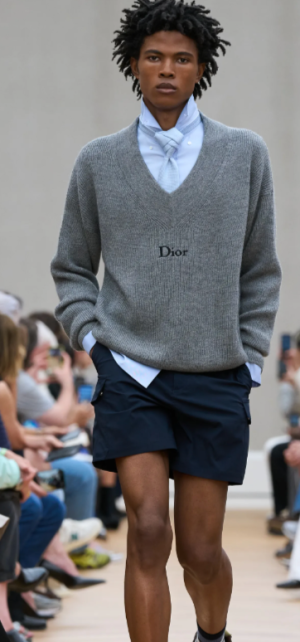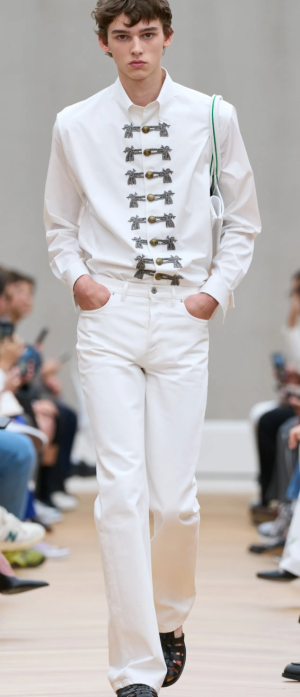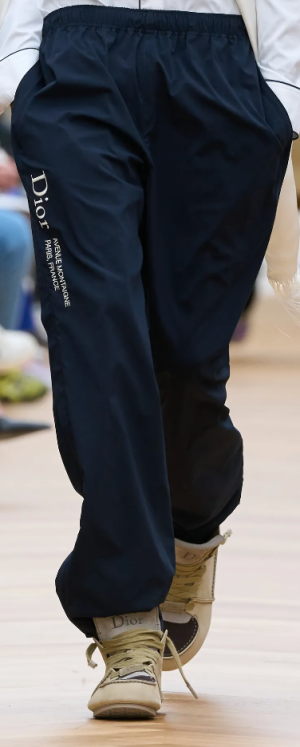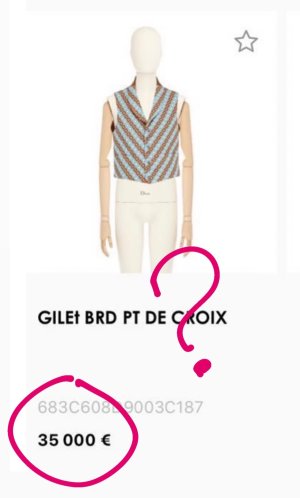Dior Homme’s suits were the urban uniform of many men in the arts and advertising scene - I’m repeating this almost every time but the majority of Helmut Lang’s followers seamlessly went on to wear Hedi’s clothes - And much as with Rick Owens, there has been from the beginning a mutual understanding between the designer and their fanbase, a culture tying the clothes and a lifestyle together in one cohesive body of work.
I am stressing this out repeatedly as I don’t think the term 'world building' repeated endlessly here in these days comes any close to the depth of what designers of an older guard managed to achieve - Not with elaborate social media, paid ambassadors and show productions whose importance surpasses that of the fashion presented in it.
So, to bring it back to JWA (much like many of his peers today) - No, I do not think he has or will ever achieve what I was hoping to point out. In all the years, all that sticked about his menswear idendity are preppy basics and unwearable, arty clothes that only exist for the shows. The elegant flourishes of military and rock star tailoring under Hedi were birthed out of honest conviction, whereas whatever supposed 'couturier' touches in JWA’s Dior Homme are distracting from the truth that with him, men’s fashion is a theoretic exercise, highlighted by the fact we always see him wearing the most banal 'normcore' clothes. It’s without doubt he has a proven track record that brought him into his present position, but as a truely great designer, it needs more than to provide sellable product and please shareholders - It’s also about the ability of carving a crystal clear, sometimes uncompromising vision. It’s about creating a dialogue with an audience that cuts deeper than the hole in your wallet when you’re in the shop paying for your clothes.
As fashion followers, we’ve been through more than a decade on fashion tranquilizers with less and less real designers on the scene and noone who really managed to turn fashion around in a long time, other than to deliver commercial success to their shareholders - Mostly by means of a bag or accessory.
As one of the few remaining members from the early years of tFS, I overview in disbelief how much room debates over supposed 'world building', the choice of stylists and casting directors are taking in our present discussions - Befitting to an era where blatant commerciality has drained the artistic quality out of fashion, the prime reason that made me want to be a part of it.
I agree with a lot of this, however, I am not sure comparing Jonathan to Hedi, Rick, or Helmut makes the most sense. While I do understand the comparison more with Hedi because of the appointment, their aims are totally different. While the latter designers all have distinct design identities, their extreme interest in bodies has always been a core part of how they approach design, exemplified in how they cast their shows. Moreover, with regard to Hedi, he has taken the additional steps to situate the work within a subculture to further contextualize his work but to also deepen the connection to his ideal person. So, of course it makes sense that they have a very specific idea of the person wearing their clothes and the lifestyle they would lead. While Jonathan has explored the body through silhouette play, I don't think he has the same interest or desires to work in that way.
If we had to draw a comparison between Jonathan and another designer, Marc Jacobs comes to mind immediately. With other designers, especially those of today, I cringe at the term 'world building.' However, the term is applicable to Jonathan and Marc because of the way they cull together disparate ideas and references to form a collection that is more about taste and sensibility. Each season is about a proposition for how to wear a garment rather than
what garment to wear. While the collections may vary each season, with one season being more wearable and another being a full-on look, the through line is a sense of irreverent play. At the same time, it's no styling trick because they both know how to make good products.
Additionally, it's no surprise that Jonathan and Marc have managed to whoo the Arnaults because they both are endlessly obsessed with luxury. Sometimes it is articulated in how they undo tenets of bourgeois culture or more specifically in the artistic collaborations with painters, filmmakers, or craftspeople. As a result, it's no surprise that their fanbase and core clientele are the editors, writers, curators, gallery owners, etc. And, for that audience, their output feels very authentic and much deeper than just products.
I'm still pretty optimistic about what he can deliver and I do think he is a true designer. He just may not be
your idea of a true designer, and that's totally fine.




